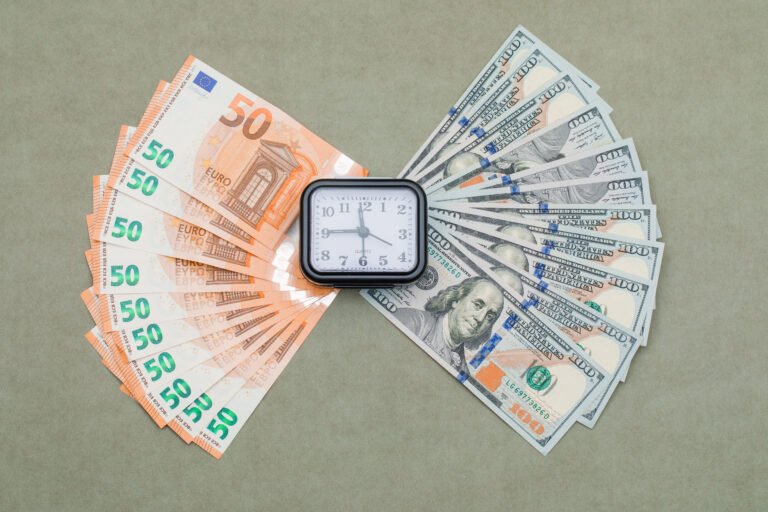Pay Yourself First Calculator
Automate Savings Before Spending — Achieve Your Financial Goals Faster
The Pay Yourself First method flips traditional budgeting on its head. Instead of spending first and saving what’s left over, you prioritize savings immediately after receiving income — making wealth-building automatic. Our Pay Yourself First Calculator helps you estimate how much to save monthly, track your spending capacity, and project how soon you’ll hit your savings goals with compound growth. It’s a smarter way to manage money with intention and discipline.
Whether you’re saving for an emergency fund, vacation, retirement, or paying off debt, this strategy ensures you always prioritize your financial future first — not last. With just a few inputs, this tool calculates your savings allocation, your spendable amount, and the timeline to reach your goal. It’s intuitive, fast, and totally free to use.
Benefits of
Pay Yourself First Strategy
Here’s why this method works for thousands of goal-driven savers:
This method is ideal for salaried workers, freelancers, or anyone with variable income. You’re not guessing what’s “left over” to save — you’re leading with savings and planning expenses afterward.
💡 Pro Tip: Set up automatic transfers to your savings or investment account right after payday. This makes paying yourself first effortless and consistent — the real key to long-term financial success.
Let your income serve your future — not just your present. Try the Pay Yourself First Calculator and start saving with strategy today.
💰 Pay Yourself First Calculator
Meet Daniel
Example Scenario
Daniel is a 32-year-old software engineer who recently decided to take control of his financial future using the Pay Yourself First method. With a stable job and consistent income, he wanted a system that prioritized long-term savings without feeling deprived in the present.
Daniel uses the Pay Yourself First Calculator to set aside 20% of his income for savings — before spending a single dollar elsewhere.
| Category | Amount | Strategy |
|---|---|---|
| Savings (20%) | $1,000 | Automated deposit to high-yield account |
| Available for Expenses | $4,000 | Rent, bills, lifestyle |
➡️ Total Monthly Budget: $5,000
He also enters a savings goal of $12,000 and a 5% annual return. The calculator shows that if he continues this strategy, he’ll hit his goal in just under 11 months — thanks to monthly contributions and compound growth.
To stay consistent, Daniel sets up an automatic transfer the day after each payday. This helps him treat savings as non-negotiable — just like rent or utilities.
💡 With this approach, Daniel never has to wonder if he’s saving “enough.” His financial goals are on track without daily stress or sacrifice. He’s no longer saving what’s “left over” — he’s building wealth intentionally, one month at a time.
How the Pay Yourself First Calculator Works – Simple Math Explained
✅ 1. Enter Your Monthly After-Tax Income
Start by entering the total amount you take home each month after taxes and deductions. This includes:
- Salary or wages
- Side hustle or freelance income
- Investment income or rental payments
Formula:
Total Monthly Income = Net Salary + Other After-Tax Income Sources
✅ 2. Choose a Savings Percentage to Set Aside First
The calculator lets you define how much of your income you want to save right away — typically 10% to 30%. This is your “pay yourself first” amount. What’s left over is what you use for expenses.
- Savings = Income × Your Chosen Percentage
- Expenses = Income − Savings
Formula Example:
If Income = $4,000 and Savings % = 20%
Then Savings = $800, Expenses = $3,200
✅ 3. Add a Savings Goal and Interest Rate
Enter a long-term goal (like $10,000) and your estimated annual return. The calculator simulates how compound interest works and tells you how many months it’ll take to reach that goal.
- Each month, your savings grow by interest and deposits
- The result shows your estimated timeline to goal completion
💡Tip: Adjust your savings percentage or increase your monthly income to reach your goal faster — and see how small changes compound over time.
Why “Pay Yourself First” Fails for Some — And How to Make It Work for You
The Pay Yourself First method is a simple yet powerful way to build savings and reach financial goals — but it doesn’t work for everyone right away. If you’ve tried it before and felt discouraged, you’re not alone. Most issues stem from common missteps, not flaws in the concept itself. Here’s where things usually go wrong — and how to fix them.
You Don’t Prioritize Savings First
You might intend to save, but only do it if money is left over at the end of the month.
Fix it: Set aside your savings amount before spending — that’s the core principle of this method.
You Choose an Unrealistic Savings Percentage
Trying to save 30% when your expenses already eat up 90% of your income won’t work.
Fix it: Start with a manageable target (like 10% or even 5%) and increase it gradually as your finances improve.
You Ignore Interest and Time
Without factoring in compound interest or setting a target timeline, your goal may feel vague.
Fix it: Use a calculator that estimates how interest helps grow your savings — and when you’ll hit your goal.
You Don’t Adjust for Life Changes
Fixed budgets break when income drops or expenses increase — and savings are often the first to go.
Fix it: Reevaluate your savings plan monthly or quarterly. Flexibility helps you stay consistent in the long run.
You Lack a Defined Goal
Saving without a purpose often leads to inconsistency or early withdrawals.
Fix it: Assign your savings a job — whether it’s a vacation fund, emergency reserve, or future investment.
💡 Final Thoughts
Paying yourself first is more than a habit — it’s a mindset shift. You’re prioritizing your future before your present wants. This strategy works best when it’s realistic, flexible, and tied to clear goals. Whether you’re starting small or increasing your monthly contributions, the key is consistency — not perfection. Plan smart, automate where possible, and let time and interest work in your favor.




